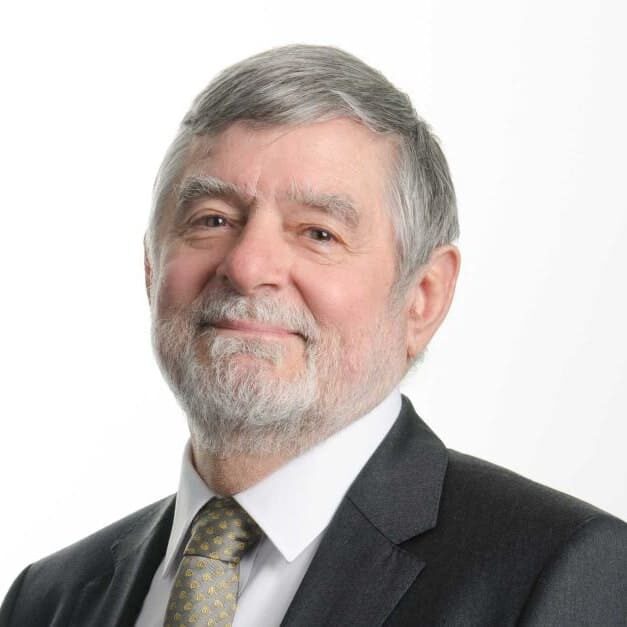Bio
Jim Patrick’s undergraduate and graduate education included training in physics, communications engineering, and biomedical engineering. His degrees include BSc, MSc, DEng, and CPEng(Biomed). He is also a fellow of Engineers (Australia) and a fellow of the Academy of Technological Sciences and Engineering. Early in his career, Jim developed an interest in how electrical stimulation might be used to help people with hearing loss. It was at this stage that he joined Professor Graeme Clark’s research team at Melbourne University in 1975.
When the Australian government decided to support the commercial development of cochlear implants, Mr. Patrick transferred to the Cochlear company to work on the development of a clinically applicable cochlear implant. He was responsible for systems engineering and the digital aspects of the implantable stimulator, playing a key leadership role in the development of this new medical implant. Two important features of the instrument were a large number of electrodes (22) in the stimulator, and the use of pulsatile stimulation allowing for precise temporal interleaving of electrode stimulation thereby reducing inter-electrode interaction. These innovations allowed for the development of advanced signal-processing strategies for significant improvements in speech understanding.
Jim rose rapidly within the company, and he was given broader responsibilities, including managing Cochlear’s global research program, exploring how novel forms of signal processing can improve the performance of the cochlear implant, and how advances in biology and electro-neural interfaces can be applied to future implant designs.
Dr. Patrick has also been involved in several projects that seek to apply this technology in other medical bionic fields such as the
- Treatment of spinal cord injuries
- Use of an implanted stimulator to provide sensory feedback for people using artificial hands
- Use of an implanted stimulator to provide pacing vestibular stimulation to relieve Meniere’s symptoms
He retired from Cochlear at the end of December 2016, with a subsequent appointment as chief scientist emeritus.
During his 35 years as a leading researcher in the hearing health industry, Jim acquired a growing list of honors for his many substantial contributions in improving the efficacy of cochlear implants. Here is a brief listing of his many awards:
- 2007 “Australia’s Most Influential Engineers” for Engineering Expertise
- Royal Institute for Deaf and Blind Children – Jim Patrick Audiology Centre
- Warren Centre for Advanced Engineering – Engineering Icon for the cochlear implant
- Patrick Meeting Room at Australian Hearing Services
- Winner of the 2014 David Dewhurst Award for Biomedical Engineering
- Jim Patrick Meeting Room at Australian Hearing Hub
- ATSE Clunies Ross Lifetime Achievement Award for the application of science and technology for the benefit of Australia in 2015
- Order of Australia for distinguished service to science through the development of Cochlear implant technology, to biomedical research and engineering innovation, and to education and professional associations in 2015
These awards are tangible evidence of Jim’s industry-based, game-changing contributions to audiology. By this means, Jim has improved the quality of life for hundreds of thousands of people with hearing loss. In short, James F. Patrick is a most worthy recipient of The Samuel F. Lybarger Award for Achievements in Industry.
